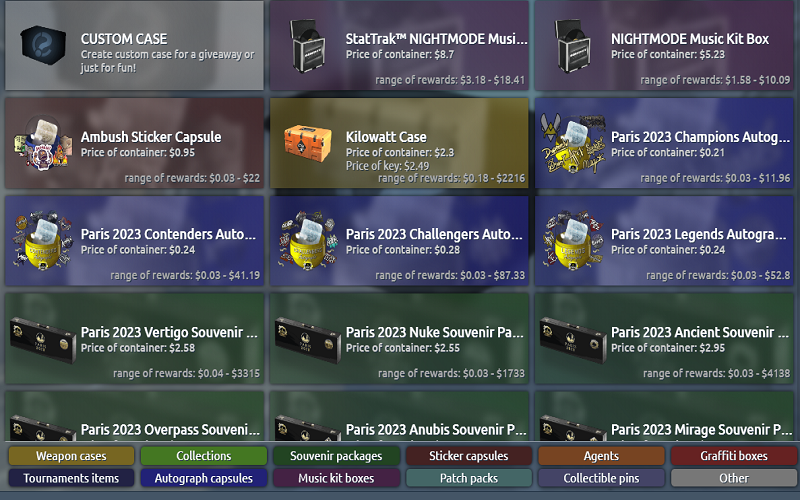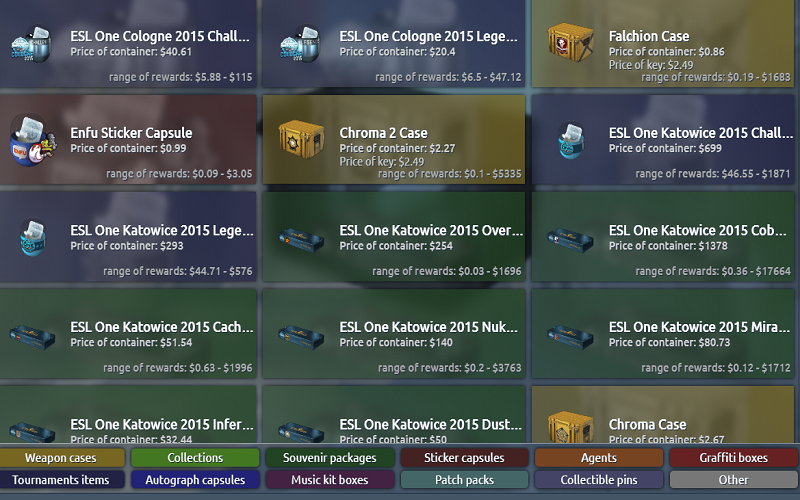CS2 Case Simulators have emerged as a popular virtual activity among Counter-Strike 2 enthusiasts. These simulators replicate the exhilarating experience of opening in-game cases, which can contain a plethora of cosmetic items such as weapon skins, gloves, knives, and more. They serve as an entertaining means for players to engage with the game’s mechanics without investing real money in keys and cases.
Understanding the Mechanics
The mechanics of CS2 (CS:GO) case simulators closely mimic the actual process of opening cases within the game. Through the utilization of random number algorithms and extensive databases, these simulators simulate the selection of items from within the cases. Players are presented with a variety of case options, each offering different sets of items with varying rarities.
Upon initiating the case opening, the simulator employs random number generation to determine the items that would hypothetically drop from the case. Subsequently, players are presented with visuals or descriptions of the simulated items, allowing them to experience the excitement of discovering potential loot.

Exploring Expected Results
The outcome of using CS2 case simulators is contingent upon the predefined drop probabilities established by the simulator developers. These probabilities typically mirror the actual drop rates found in the game. Albeit, subject to occasional updates and alterations by the developers.
Players interested in gaining insights into the likelihood of obtaining specific items should ensure that the simulator utilizes the most current drop probability data sourced from official channels, such as Valve’s publications.
Delving into Economic Insights
Beyond mere entertainment, CS2 case simulators offer valuable insights into the economic aspects of case openings. Using case simulators, players can try out strategies and estimate how profitable investing in cases and keys might be. It gives them the edge to make smarter in-game investments.
Notably, the absence of real monetary transactions in simulators mitigates the financial risks associated with compulsive spending, making them a prudent choice for individuals prone to excessive expenditure on in-game items.
Examining the Emotional Aspect
While CS2 case simulators faithfully replicate the mechanics of case openings, they may not fully capture the emotional highs and lows experienced in real time. Anticipation, the joy of rare drops, and the frustration of unlucky streaks are essential parts of opening cases that keep players hooked. These emotions bring authenticity and excitement to the game.
Nevertheless, simulated openings can still evoke a sense of excitement and satisfaction, particularly when players secure rare or desirable items.

Enhancing Skills and Knowledge
In conjunction with utilizing case simulators, aspiring Counter-Strike players are encouraged to familiarize themselves with official item drop statistics provided by Valve. This comprehensive approach facilitates a deeper understanding of drop rates, item rarities, and the inherent randomness of case openings.
Although simulators let players explore odds and refine strategies, the outcomes aren’t always realistic. Winning virtually doesn’t promise real in-game success.
To Wrap Up!
CS2 case simulators allow players to study drop rates and game mechanics without spending a cent. They also offer a safe space to refine strategies risk-free.
So, by leveraging these simulators alongside official drop statistics, we can gain a deeper understanding. Players can cultivate a nuanced understanding of case openings while tempering their expectations regarding item acquisition. Case simulators play a big role in the Counter-Strike scene, mixing fun with tactical experimentation. They captivate players by recreating the excitement of in-game case openings.
